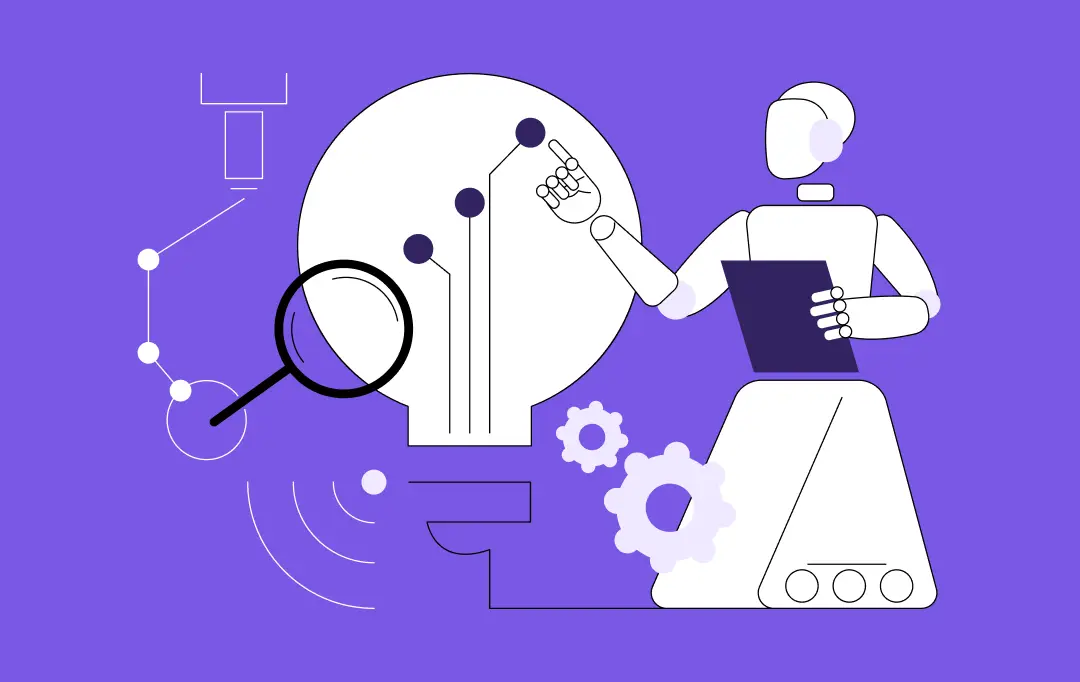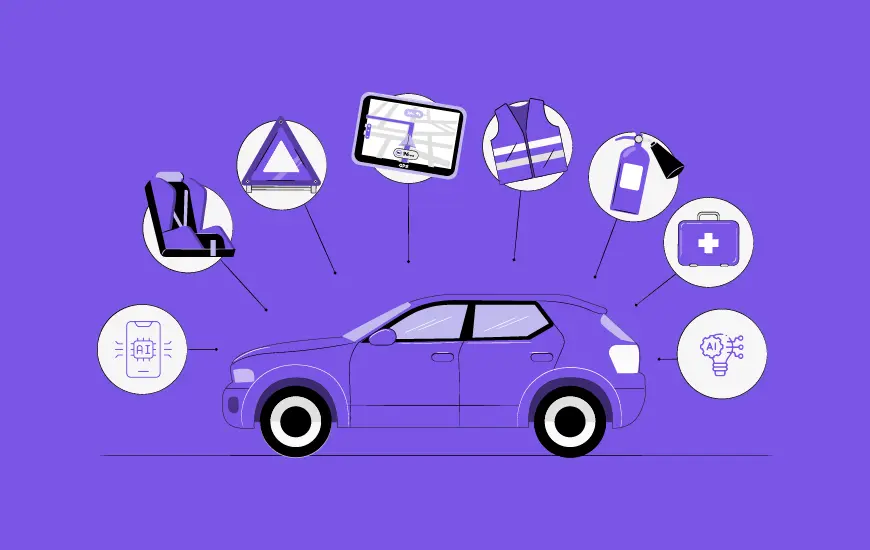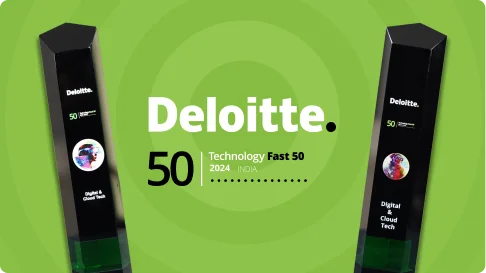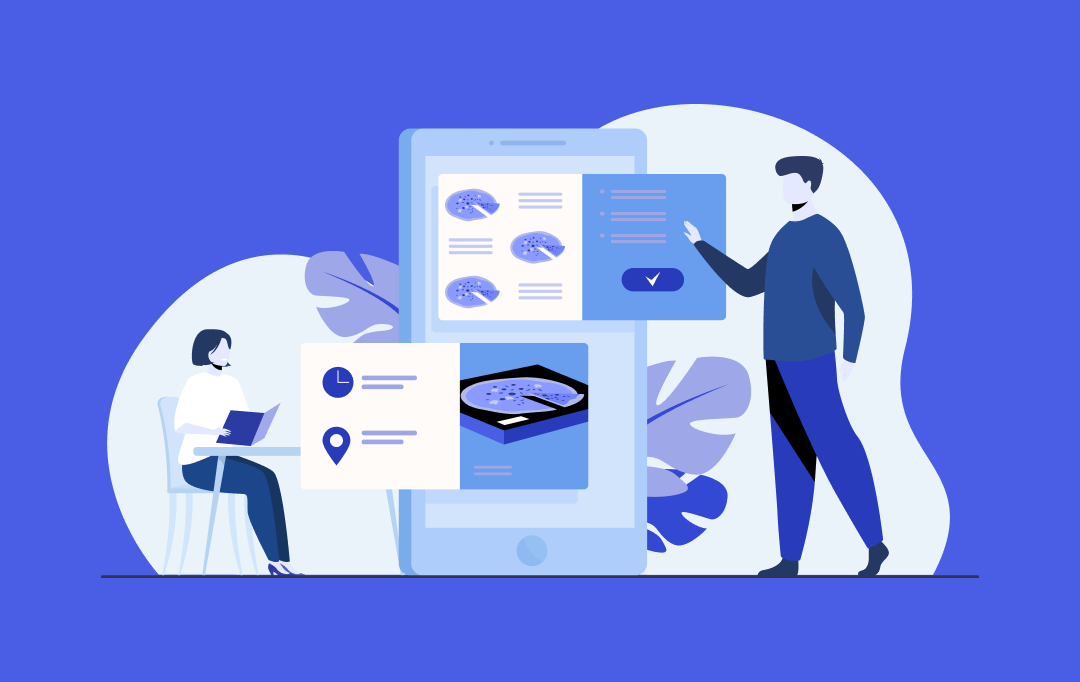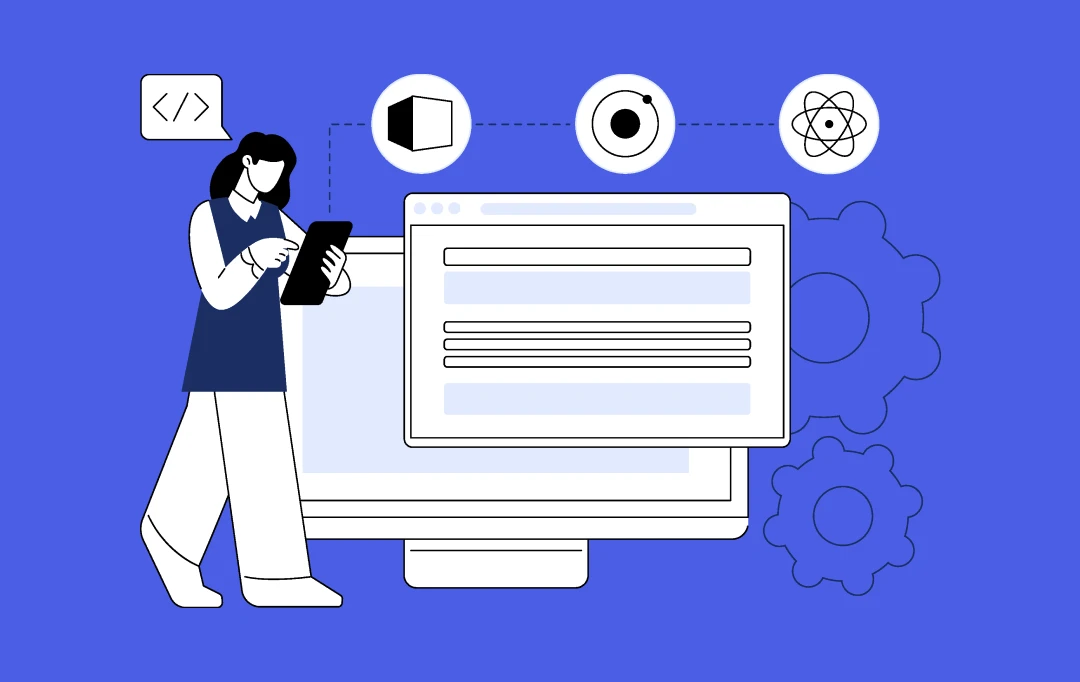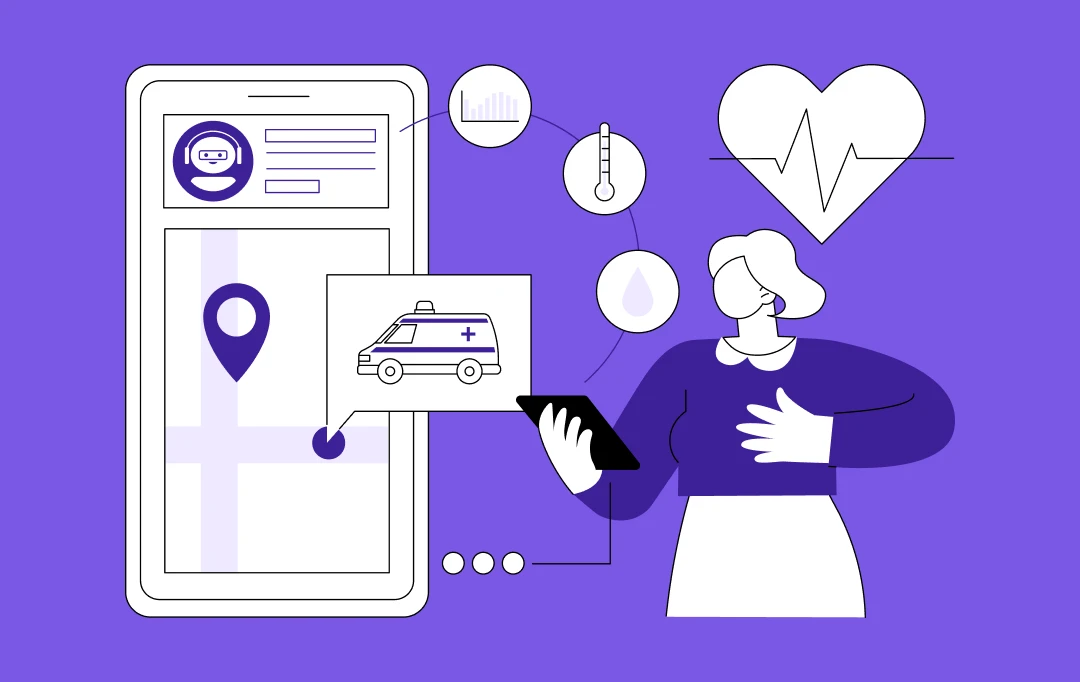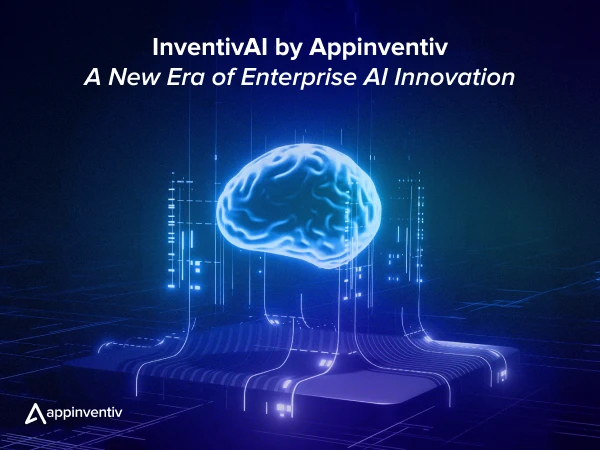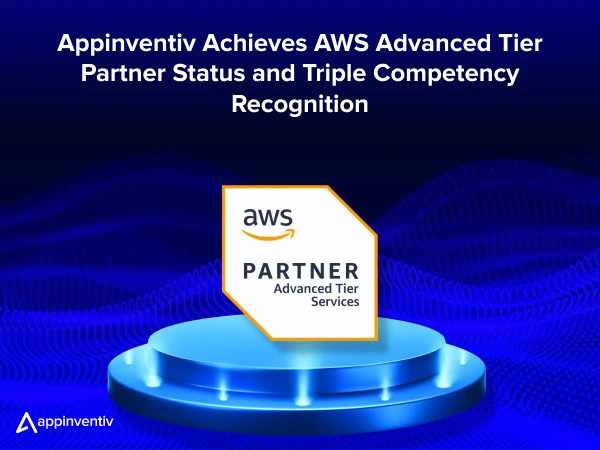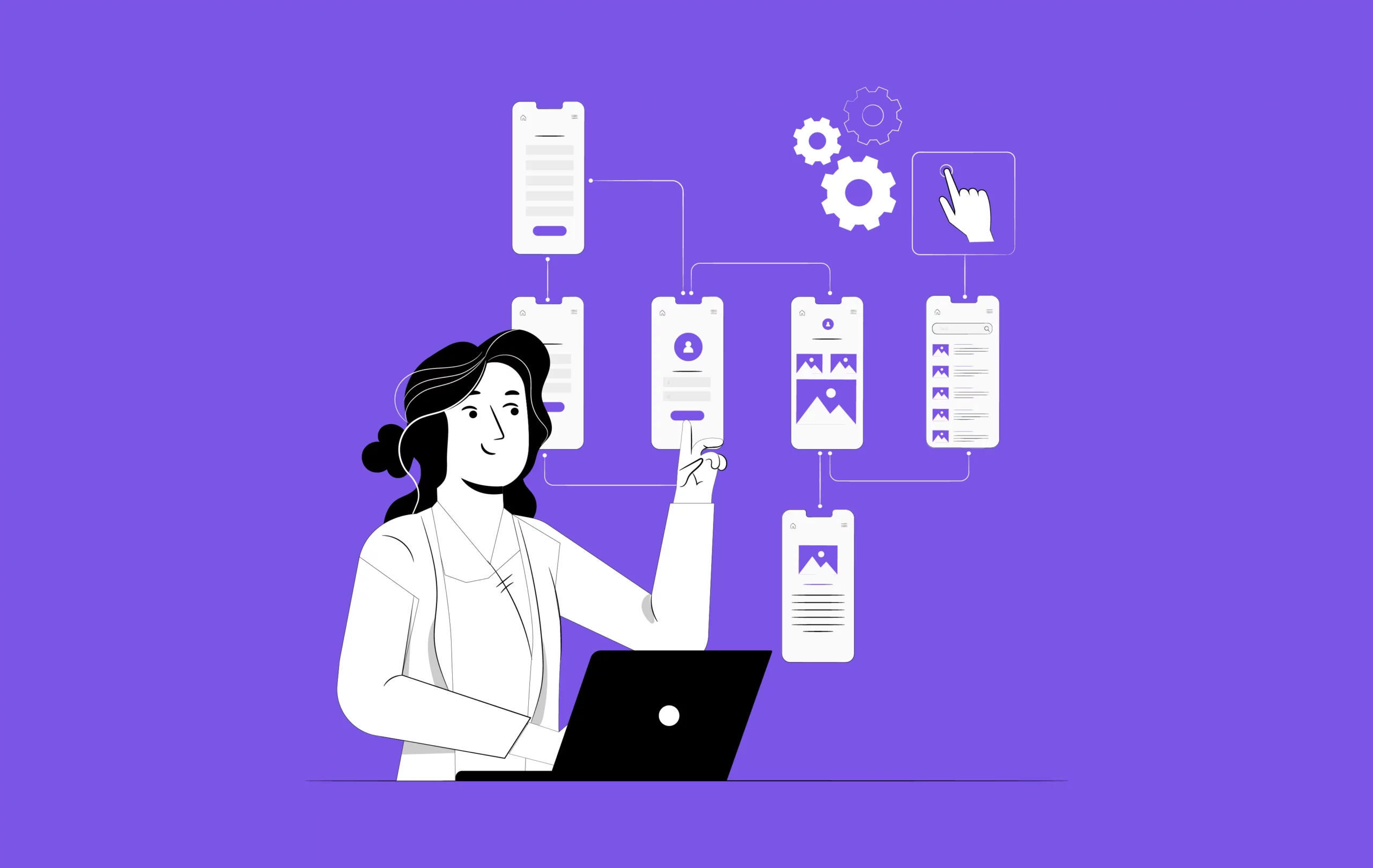- What is MVP in Software Development?
- MVP vs. PoC vs. Prototype: Understanding the Core Differences
- Types of MVP Software Development
- Low-Fidelity MVPs
- High-Fidelity MVPs
- The Key Steps of Developing an MVP in Software Development
- Clarify Your MVP’s Core Value Proposition
- Outline Essential Features for Maximum Impact
- Create Wireframes & Design an Intuitive UI/UX
- Develop Using Agile Methodology
- Test, Iterate, and Refine
- Launch with a Strategic Approach
- Scale and Evolve Your Product
- Tips to Get There Faster
- Develop with Low or No-Code Software
- Create a Landing Page
- Identify the Value Proposition
- Stay Focused
- How MVP Development Helps You Achieve Business Goals Faster
- Acts as a Miniature or a Tester of the Product or Service
- Faster Release Time
- Product Evolves as it is Showcased
- Increase the Learning Curve of the Team
- Benefits of MVP in Software Development
- Launch Quickly with Minimal Investment
- Identify and Engage the Right Audience Early
- Ensures Alignment of Product Features with Real User Needs
- Faster Time to Market
- Improved Investor Confidence
- Minimized Development Costs
- Scalability & Future Growth
- From Prototype to Profit: Startups That Nailed MVP Development
- Dropbox
- Groupon
- Spotify
- Airbnb
- Uber
- Why MVPs Fail: The Biggest Mistakes and How to Fix Them
- Defining the Optimal Feature Set
- Choosing the Wrong Technology Stack
- Insufficient Market Research and Validation
- Neglecting User Feedback
- Underestimating Development Costs and Timelines
- Failing to Plan for Scalability
- How can Appinventiv Become Your MVP Development Partner?
- FAQs
In this blog, we will analyze what MVP means in software development, its key types, steps to develop one, tips to accelerate the process, major benefits, real-world success stories, and common pitfalls to watch for. Whether you’re a startup founder or entrepreneur, this detailed guide will help you turn ideas into action with an efficient MVP approach.
You have a brilliant idea for a revolutionary app. Your team is excited, you secure funding, and development begins. Months pass, countless hours are spent coding, and poor user adoption. Features go unused, engagement is low, and the product struggles to gain traction. What went wrong?
The mistake? Building too much, too soon.
Instead of investing heavily in a fully developed product upfront, a smarter approach is to start with a Minimum Viable Product (MVP)—a streamlined version of your software that focuses only on its core functionalities. This allows you to test real user demand, gather feedback, and iterate efficiently before scaling.
By adopting MVP software development, you’re not only saving time and money but also strategically aligning your product with users’ needs from day one.
In this blog, we’ll explore the critical role of MVP in software development, how it differs from Proof of Concept (POC) and prototypes, the various types of MVP software, key development steps, expert tips, real-world success stories, and the common pitfalls that lead to MVP failure. Stay tuned!
What is MVP in Software Development?
“The minimum viable product is that version of a new product which allows a team to collect the maximum amount of validated learning about customers with the least effort.”
By Eric Ries
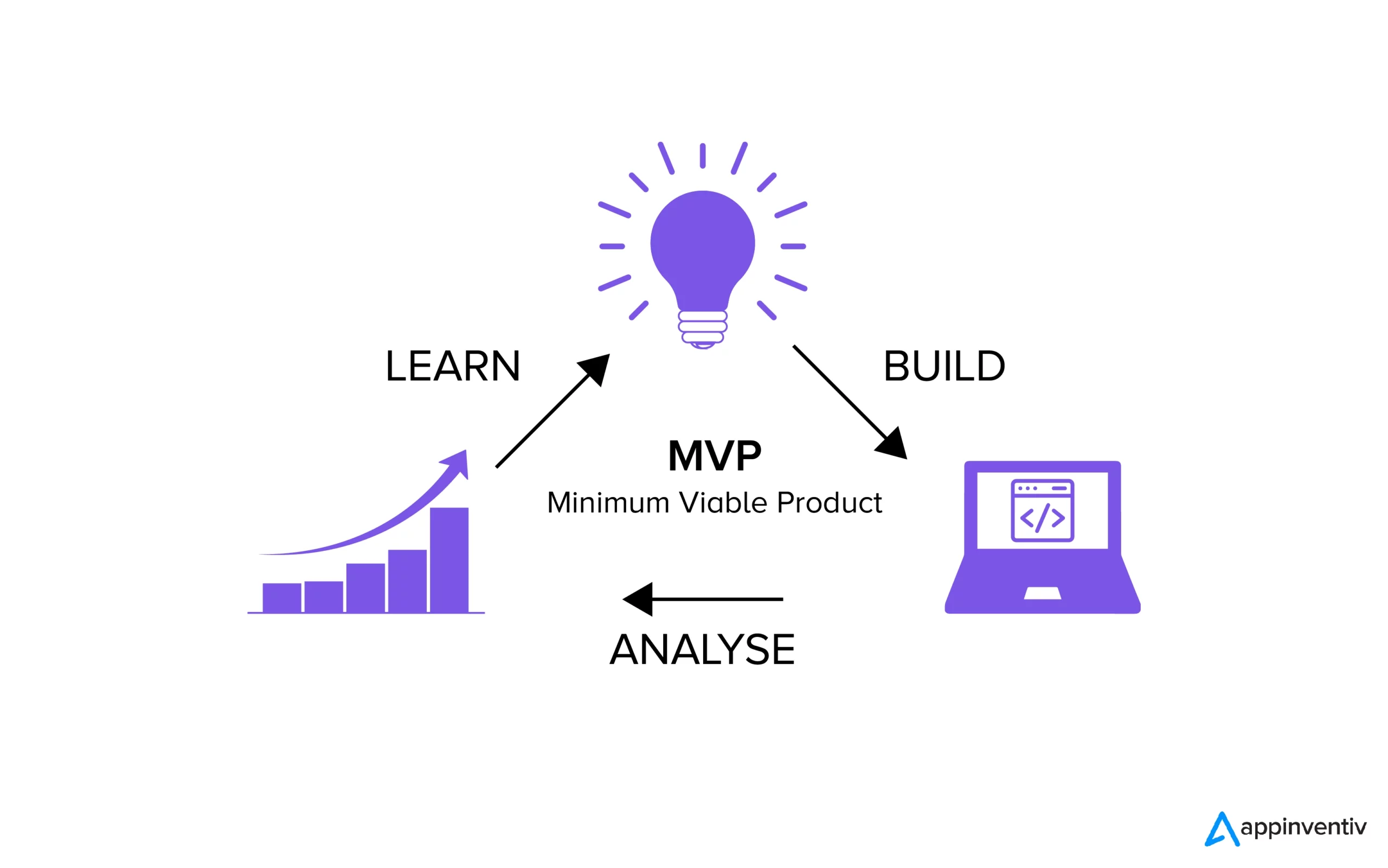
As the name suggests, MVP software development is the software with minimum features to make the product viable, i.e. it fulfills the requirements such that the core functionality of the product is satisfied. Some people confuse it with the wireframe or an early proof of concept, however, it is actually the release of the original version of the product that is fit for customers with no extra frills.
Building the basic structure, testing its functionality, and delivering it successfully becomes the foundation for the authenticity and success of later versions. Moreover, the final application will be based on user experience and feedback.
MVP software development for startup thus helps release the product in a phased manner, greatly eliminating the possibilities of failure and saving cost and time. Changes based on the customers’ requirements and feedback can be incorporated through the iterative process of building, measuring, and learning, ensuring that the product completely meets market needs.
Also Read- An Entrepreneur’s Guide on Minimum Viable Product (MVP)
MVP vs. PoC vs. Prototype: Understanding the Core Differences
Grasping the distinctions between MVP, PoC, and Prototype is essential for making informed development decisions. Choosing the right approach streamlines development, minimizes costs, and fast-tracks product success. Below is a table outlining their key differences.
| Aspect | PoC (Proof of Concept) | Prototype | MVP (Minimum Viable Product) |
|---|---|---|---|
| Purpose | Validates technical feasibility | Showcases design & user experience | Tests the market demand with a functional product |
| Functionality | Limited or non-functional | Interactive but not fully operational | Fully functional with core features |
| Users | Internal teams & stakeholders | Designers, product owners, & investors | Early adopters & real users |
| Development Time | Short (days to weeks) | Moderate (weeks to months) | Longer (months to a year) |
| Outcome | Confirms if an idea is technically possible | Provides a visual representation of the product | Launches a usable product for market feedback |
Types of MVP Software Development
Minimum viable product software development is crucial in testing business ideas while keeping costs low. MVPs generally fall into two categories: low-fidelity and high-fidelity, each serving distinct validation needs. Low-fidelity MVPs prioritize rapid concept testing with minimal investment, whereas high-fidelity MVPs provide a more polished, interactive experience.
Choosing the right type depends on your business goals, budget, and the level of market validation required.
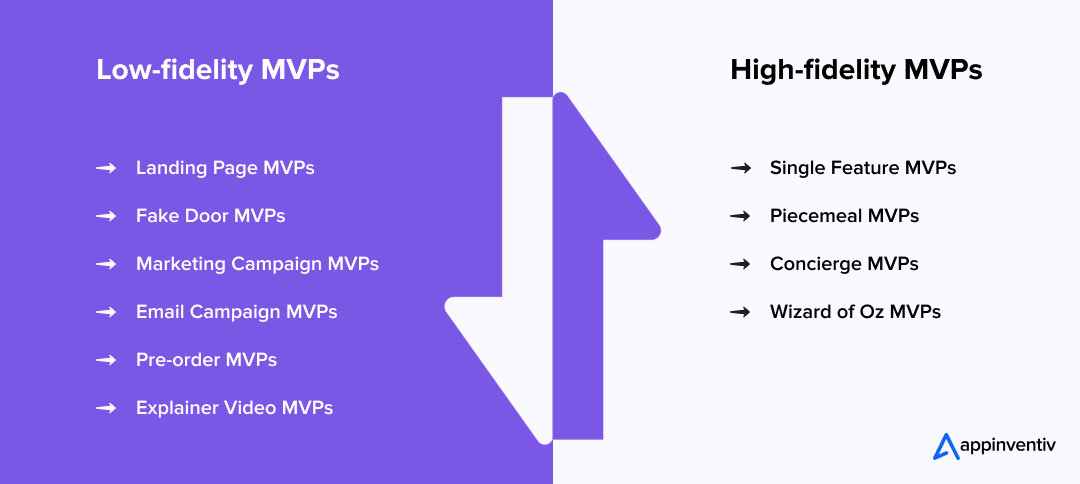
Low-Fidelity MVPs
Low-fidelity MVPs are quick, cost-effective methods for testing demand before investing in full-scale development. They do not require coding or complex infrastructure, making them ideal for early-stage validation.
- Landing Page MVPs: A simple webpage that introduces the product, collects sign-ups, and gauges interest.
- Fake Door MVPs: Simulates a feature or product to measure demand before development.
- Marketing Campaign MVPs: Use targeted ads or content marketing to evaluate market interest.
- Email Campaign MVPs: Email a potential user base to test engagement and demand.
- Pre-order MVPs: Customers can purchase or reserve a product before it’s fully built.
- Explainer Video MVPs: A video demonstrating the product’s functionality without actual development.
High-Fidelity MVPs
High-fidelity MVPs involve more detailed prototyping and user interaction, providing a closer experience to the final product. They require some development effort and are used to refine the core functionality.
- Single Feature MVPs: Focuses on one primary feature to test user engagement and adoption.
- Piecemeal MVPs: Uses existing third-party tools to replicate the product experience.
- Concierge MVPs: Delivers services manually before automating them to assess user needs.
- Wizard of Oz MVPs: Simulates automation while human operators handle tasks behind the scenes.
Also Read: POC vs. MVP vs. Prototype: Which is Better?
The Key Steps of Developing an MVP in Software Development
Developing a Minimum Viable Product (MVP) demands a well-planned strategy to balance essential features and performance. Let’s check out the key stages of MVP software development.
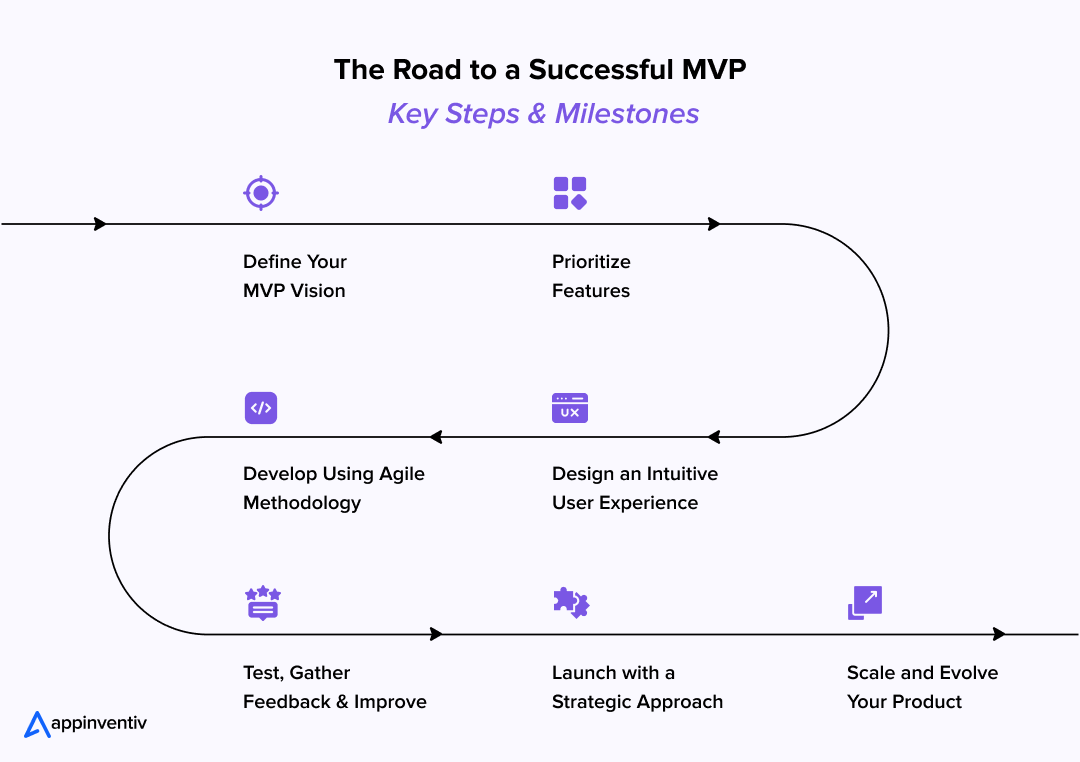
Clarify Your MVP’s Core Value Proposition
When starting with MVP software development, defining the problem your product solves and the specific audience it serves is essential. Identify key pain points, assess market demand, and research competitors to ensure your MVP has a strong purpose.
A well-defined vision helps align development efforts, reduces unnecessary pivots, and sets the foundation for future scalability. Without a clear vision, your product risks becoming directionless and misaligned with user expectations.
Outline Essential Features for Maximum Impact
Focus on the most impactful features for custom MVP software development while maintaining lean development. To categorize features effectively, use frameworks like the MoSCoW method (Must-have, Should-have, Could-have, Wont-have).
Prioritizing correctly helps you reduce development costs and launch faster without compromising core usability. A well-structured feature roadmap prevents feature scope expansion and ensures that only the most impactful elements are included in the initial launch.
Create Wireframes & Design an Intuitive UI/UX
A seamless UI/UX enhances engagement and adoption for MVP startup software development. Create wireframes and prototypes to visualize your MVP’s layout, ensuring a seamless and engaging user journey. A good UI/UX design enhances user satisfaction, reduces churn rates, and boosts adoption.
The goal is to make interactions smooth and intuitive from first use. Conduct A/B testing and usability studies to refine designs before development begins, ensuring your MVP is user-friendly and free from friction points.
Develop Using Agile Methodology
When choosing MVP software development services, verifying that your tech partner follows Agile methodology is crucial. Breaking the development process into small, iterative sprints enhances flexibility and enables continuous refinement. Agile software development allows you to incorporate user feedback efficiently and pivot if necessary.
By working in sprints, your team can focus on incremental growth, reducing the risk of large-scale failures. Regular sprint reviews, retrospectives, and stand-up meetings keep the development cycle adaptive and responsive to changes, ensuring an efficient and streamlined workflow.
Test, Iterate, and Refine
Beta testing is critical in developing a minimum viable product software. Gathering real-world insights ensures product refinement. To refine your MVP, conduct usability testing, performance evaluations, and bug tracking.
Continuous feedback loops ensure that the product evolves in alignment with user expectations and market needs. Monitoring user behavior, analyzing heatmaps, and implementing customer surveys can provide deeper insights into usability issues and areas for improvement.
Launch with a Strategic Approach
A targeted launch strategy is essential for MVP software development success. Deploy your MVP with a targeted launch strategy to ensure you attract the right audience. Leverage early adopters and track user engagement and retention KPIs.
A well-executed launch increases the chances of product-market fit and helps secure early traction. Use social proof, PR campaigns, and community engagement to generate buzz and ensure your MVP gets the visibility it deserves.
Scale and Evolve Your Product
Transitioning from a custom MVP software development phase to a full-scale product requires strategic scaling. To expand your MVP into a full-scale product, analyze user data, iterate based on real-time insights, and gradually introduce new features. Ensure that your infrastructure supports scaling and continuously optimizes performance.
This phase marks the transition from a minimally viable product to a dominant market player. Expanding based on validated data rather than assumptions helps make well-informed decisions, minimize risks, and position the product for long-term success.
Tips to Get There Faster
There have been conversations, theories, and certain successful ways around validating MVP software development. A one-page template format was introduced to help startups find a viable product market that fits their strong value proposition and customer requirements.
Later, Eric Ries introduced the Lean Startup concept, which became the prototype for building and launching new products. Based on the product line, experienced developers and entrepreneurs have shared different ways and tips for getting to an MVP faster. With the right MVP startup software development approach, businesses can rapidly test their ideas, gather user feedback, and refine their offerings before a full-scale launch.
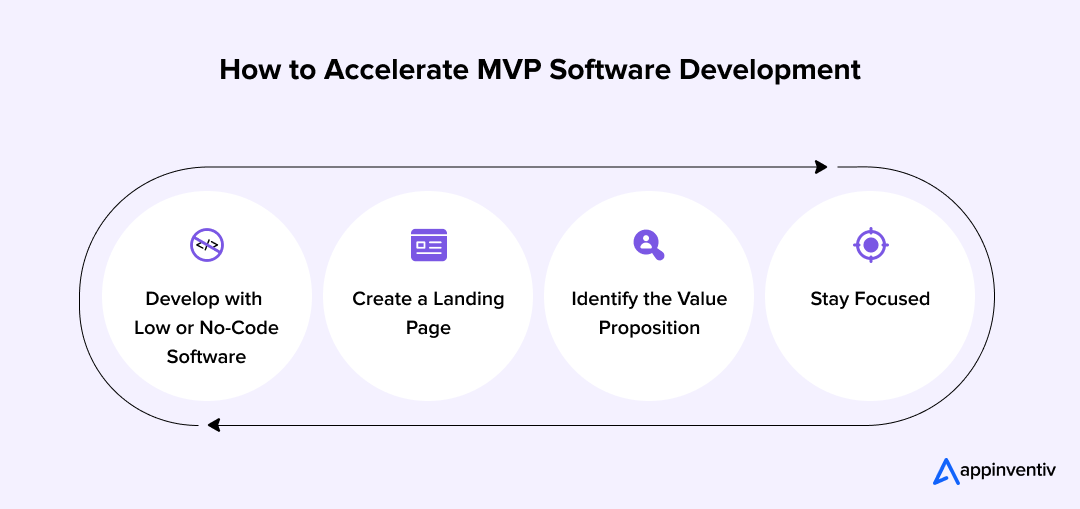
Develop with Low or No-Code Software
A more efficient approach is leveraging low-code or no-code platforms, which allow businesses to quickly build MVP software design prototypes without heavy technical dependencies. This enables rapid experimentation and provides valuable insights before committing to full-scale development.
If you build your MVP software on low or no-code software, you can quickly translate your idea into software that can be experimented with. The results will give you a fair idea of whether you should invest in developing a full-fledged application.
Create a Landing Page
Creating a landing page to promote your services will help you capture the customer’s basic details like email address, phone number, and more. Based on user interactions, you can analyze the features that should be dropped, improved, or added.
Including feedback and short surveys on the landing page can be of great help to understand the potential customers and the reasons behind their buying decision. This approach helps refine the MVP software engineering process, ensuring that development efforts are focused on the most impactful functionalities.
Identify the Value Proposition
Clarity on what value your product will add for customers will ease the process, enabling entrepreneurs and developers to create a more linear MVP roadmap. MVP in software development focuses on the core value proposition, ensuring that features and functionality align with user needs, making the product more effective and market-ready.
With the help of feedback and tests, narrow down the proposed product’s value proposition to create the MVP software. Features and functionality should be aligned with the core of the value proposition.
Stay Focused
To create a new product, the best approach is to follow a backward approach by staying focused on the main point. Getting lost or stuck by getting into the details might make you lose track. Understanding the MVP’s meaning in software development helps maintain clarity, ensuring that the MVP is designed to gather user feedback and refine the product rather than aiming for immediate profitability.
The MVP should ideally be created to put your product in front of the audience so that you can gather feedback and make the required iterations to improve the product. Creating an MVP with a mindset to launch the product for quicker profit-making is the wrong approach. Eliminating unnecessary functionalities can save on redoing multiple steps.
How MVP Development Helps You Achieve Business Goals Faster
‘Doing extended development of an unreleased software product is building a tower of hope on a foundation of assumptions.’ – Shawn Crowley
With a clear understanding of the need for MVP in software development, let us now align the benefits with business goals and talk about the key aspects of launching MVP software.
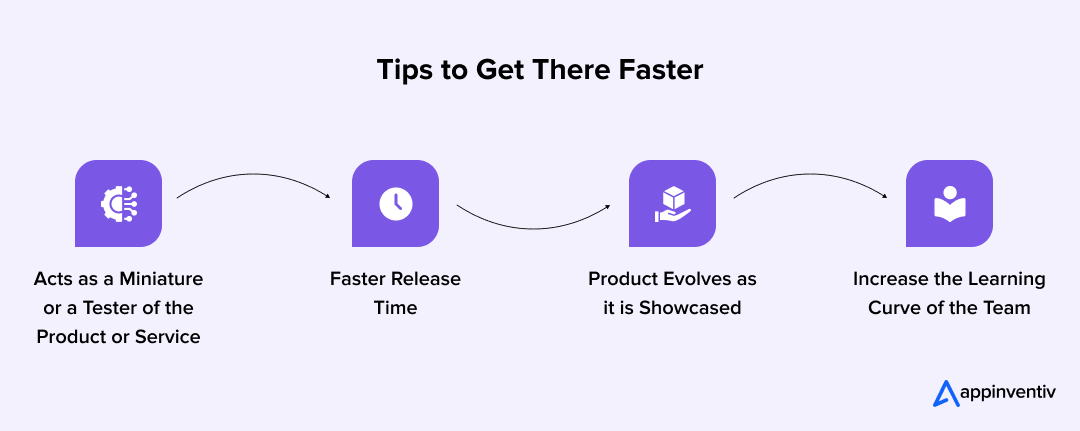
Acts as a Miniature or a Tester of the Product or Service
Starting your product with a minimum viable product keeps the team focused on the core functions and value of the product and the software. This approach helps in reducing cost, eliminating errors, and risks many times over. With the feedback and product analysis, you can come up with a correct business idea that works and will be economically feasible.
In other words, you can hypothecate the product with minimal resources. It saves your team from procrastination by keeping it clear and crisp by not including unnecessary features.
Hiring MVP software development services makes finding and fixing bugs and challenges easier, reducing rework. In contrast, multilayered functionality software can be difficult and time-consuming, as identifying and resolving bugs often leads to delayed deadlines.
Faster Release Time
It is always beneficial to test the waters before diving in. The fundamentals remain the same with MVP design. A quicker release is only possible if you successfully launch your product’s primary feature.
MVP software development agencies help you release the product quicker and allow you to start building relationships with your target audience. This can become the firm ground for later success.
Testing the market at an early stage saves from expensive mistakes by ensuring that there is actual demand for your product/service. MVP does exactly this.
Product Evolves as it is Showcased
Building an MVP paves the way for evolution into later stages of software development. Creating an MVP focused on core functionality creates room for new features and updates based on customer feedback. Regularly upgrading the product features not only adds value but also offers a feel-good experience to the end customers.
With gradual growth with MVP, you can benefit from newer technologies as they become available. An MVP software development company ensures your product remains relevant and updated in the competitive market.
Increase the Learning Curve of the Team
From the basic launch of the product until full-fledged delivery, the product evolves with time in terms of features and technical aspects. This, in turn, provides many opportunities for the development team to learn the product in depth, thus adding the best techniques and technical factors that will enhance the product.
As mentioned earlier, MVP is an iterative process. It offers the team a platform to learn and adopt iterative processes like Agile, increasing the team’s learning curve.
Benefits of MVP in Software Development
Adopting a technology or a feature only becomes viable if it has some benefits. Now that we have understood MVP in software development, the business benefits must align with it. Below are some of them.
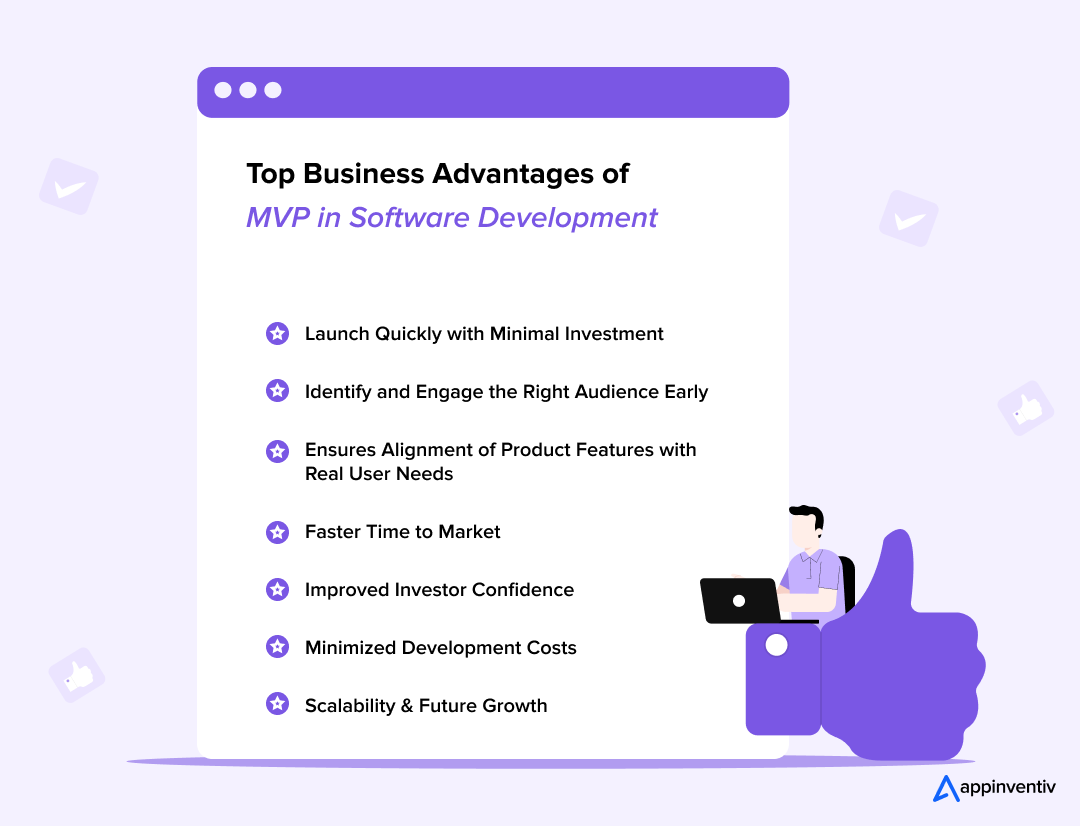
Launch Quickly with Minimal Investment
As the name suggests, MVP is launching a product or service with minimal yet viable functionalities. Even if there are failures, these can be handled by eliminating and correcting the errors, weaknesses, and mistakes without any loss. Most startups collaborate with an MVP software development company to assess the economic viability of their product or service while keeping costs under control.
Identify and Engage the Right Audience Early
The primary objective of the MVP concept is to find the right target audience for your service/product. Depending on time and knowledge, you can gather feedback, conduct surveys, and gather suggestions with an MVP. Businesses can also gather feedback, conduct surveys, and collect valuable user insights by working with MVP software development agencies.
By clearly understanding the audience and fitment of the offerings, you eliminate the hypothesis theory by testing the product. Making iterations with this understanding will have fewer errors, ultimately minimizing the risk and speeding up the development process.
Ensures Alignment of Product Features with Real User Needs
It’s a nightmare to find out later that we are building or creating something no one wants. Thus, building a viable product becomes necessary. Knowing if the product is feasible should be done through an MVP software design at an early stage. By figuring out the customers’ needs, it becomes easier to balance the product’s offerings and the end-users’ requirements.
Gathering maximum-quality feedback is important to balance the needs and offerings. With MVP, you can target a specific group of users to collect quality feedback and responses.
Faster Time to Market
Instead of spending months or years on a fully-featured product, an MVP allows businesses to enter the market quickly. MVP software development services help companies gain a competitive edge by launching a functional product, learning from real-world usage, and iterating based on insights.
This approach reduces the risk of developing unnecessary features and prioritizes only valuable functionalities. By testing an early version with real users, businesses can refine their offering and build customer trust even before a full-scale launch. MVP for software development ensures companies can validate their concept before committing to full-scale production.
Improved Investor Confidence
Investors are more likely to back a project that has market validation. An MVP provides tangible proof of product demand, demonstrating real user interest, making securing funding easier. Businesses can showcase customer engagement, adoption rates, and potential revenue projections by presenting data from real users.
This strengthens the case for further investment, increasing the chances of attracting venture capital or strategic partnerships. With an MVP for software development, businesses can tailor their product to meet investor expectations while ensuring a scalable roadmap for future growth.
Minimized Development Costs
Investing in a fully-fledged product without market validation can be risky. By working with MVP startup software development experts, businesses can minimize upfront costs, allocate resources efficiently, and develop only the most essential features before expanding. This cost-effective approach prevents wasted investment in non-essential functionalities that may not resonate with users.
It also allows businesses to reinvest savings into marketing, scaling, or further feature enhancements based on user demand. The cost of MVP software development plays a crucial role in budget planning, helping businesses optimize expenses while ensuring a viable and market-ready product.
Scalability & Future Growth
MVP for software development lays the groundwork for scalable solutions. Starting with a lean product allows businesses to gradually incorporate advanced features and leverage new technologies as they become available, ensuring long-term market relevance.
As user needs evolve, minimum viable product software development makes it easier to introduce iterative improvements without disrupting the core functionality. MVP software development services help businesses future-proof their products by enabling continuous optimization and feature enhancements based on user feedback.
From Prototype to Profit: Startups That Nailed MVP Development
Building an MVP saves time, effort, and money. Exploring MVP in software development examples helps clarify how this approach drives business success. Take a simple doughnut—its MVP is a basic sweet bun with a hole, satisfying hunger. Once customers embraced it, enhancements like chocolate or cream toppings followed. Similarly, major companies launched with an MVP, later refining their products with added features to expand usability and market reach. Here are some of the top examples:
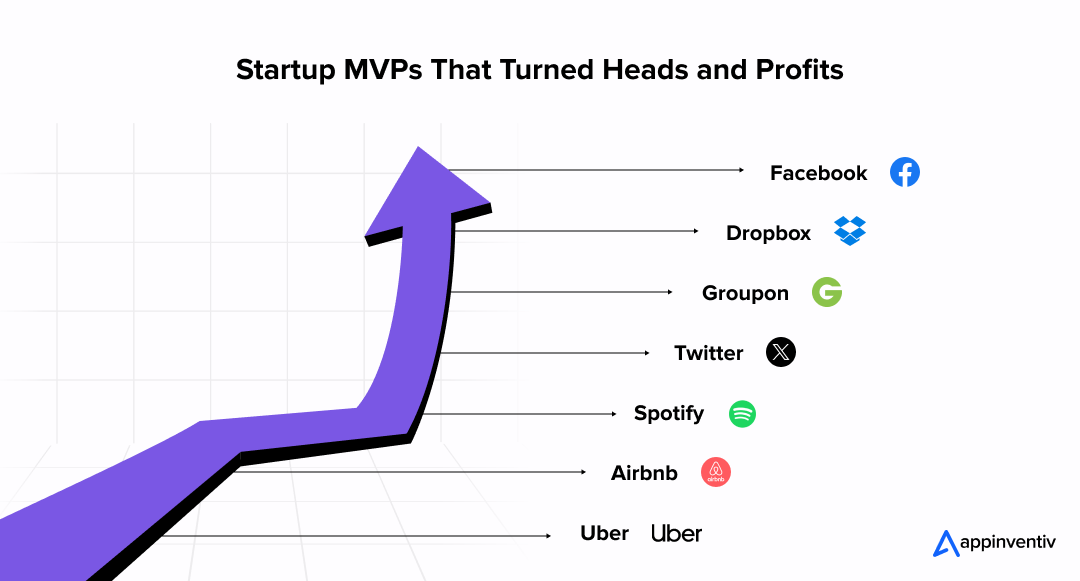
Originally, Facebook was called “TheFacebook”. It was developed as an MVP that helped American students from different schools stay connected. Initially, it was launched in four universities in America. A simple application tested on a segment of the audience for a year later opened access to everyone across geographies.
Today, Facebook has become a global social media giant with nearly 3 billion monthly active users. It offers services beyond networking, including a marketplace, video content, and business tools.
Dropbox
Dropbox is a well-known file-hosting company. With a team of one member, the company’s co-founder, the MVP approach was implemented as an explanatory video demonstrating the technology’s possibilities and innovative functions. Surprisingly, signups increased five times in just one night without an actual product.
Today, it has over 700 million users. By testing the business hypothesis and learning the actual market needs, Dropbox used the MVP strategy without releasing the actual software.
Groupon
With time, the original idea was changed/modified to meet market needs. Groupon was launched as an MVP to gather people who intended to help each other, run a crowdfunding campaign, or boycott some negligent stores.
Later, users started sharing special coupons and promo codes. The requests were handled manually by emailing individual customers with all the information. The MVP approach helped save costs on software development and could help get results from the idea (testing the product viability). It later became the most popular eCommerce platform serving global customers.
Initially named “twittr”, it was introduced as an SMS communication platform between employees of Odeo – a podcasting platform. For testing the product, the MVP software only had the feature of sending messages with no hashtags, replies, reposts, etc. Later, the product evolved into, what we know today as “ Twitter”, a stand-alone social networking platform.
Spotify
Spotify initially launched as an MVP software development project focused on combating music piracy by offering legal streaming. The early version was introduced in Sweden and featured free, ad-supported music access. Once the demand was validated, Spotify fine-tuned its business model, expanded internationally, and introduced premium subscriptions, personalized playlists, and an extensive music library.
Airbnb
Now a dominant player in the short-term lodging market, Airbnb began as a simple MVP software engineering experiment when its founders rented out air mattresses in their apartment to earn extra income. They launched a basic website to test their idea and gauge demand. As bookings started rolling in, they refined the platform, expanded their services, and gradually built Airbnb into the global hospitality powerhouse it is today.
Uber
Uber, originally named “UberCab,” debuted as an MVP designed to connect passengers with professional drivers through an app. To test market demand, it exemplified the MVP meaning in software development by focusing on core functionalities—ride booking and digital payments. It started in San Francisco with a straightforward feature set: allowing users to book rides and make payments digitally. As demand surged, Uber continuously enhanced its platform, introduced UberX for more affordable rides, and expanded its reach, ultimately revolutionizing the ride-sharing industry on a global scale.
Why MVPs Fail: The Biggest Mistakes and How to Fix Them
Building a Minimum Viable Product (MVP) is crucial for startups and businesses, allowing them to test ideas with minimal risk. However, the challenges in MVP software development can make the process complex and demanding. Identifying and addressing these obstacles early can significantly increase the chances of success.
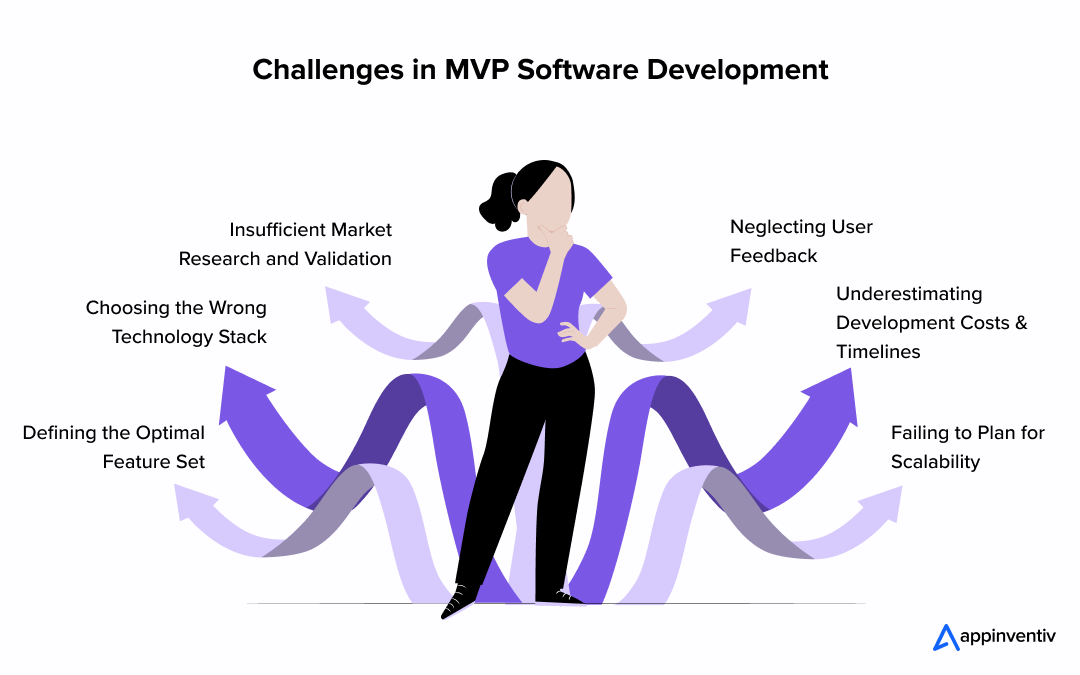
Defining the Optimal Feature Set
One of the biggest MVP software development challenges is finding the right balance. Some startups overload their MVP with excessive features, while others oversimplify it, making it unappealing to users. Striking the right balance is essential.
How to Overcome It:
- Prioritize features that directly address the core problem.
- Use frameworks like the MoSCoW method (Must-have, Should-have, Could-have, Won’t-have) for effective decision-making.
Choosing the Wrong Technology Stack
Selecting an inappropriate tech stack can lead to scalability issues, high maintenance costs, or the need for a complete rebuild in the future.
How to Overcome It:
- Choose a technology stack that supports future scalability and flexibility.
- Consult experienced developers before making a final decision.
Insufficient Market Research and Validation
A major pitfall in MVP development is failing to validate the idea before building the product. Without proper research, businesses risk creating something that does not address a real problem or lacks market demand.
How to Overcome It:
- Conduct surveys, interviews, and competitor analysis to assess demand.
- Leverage tools like Google Trends, industry reports, and beta testing to gauge user interest.
Neglecting User Feedback
Developing an MVP without gathering and incorporating user feedback can result in missed opportunities for essential improvements.
How to Overcome It:
- Implement analytics tools to track user behavior and interactions.
- Actively seek feedback through surveys, focus groups, and direct user engagement.
Underestimating Development Costs and Timelines
Many MVP projects run over budget or take longer than expected due to inadequate planning.
How to Overcome It:
- Establish a clear roadmap with achievable milestones.
- Use agile methodologies to ensure flexibility and adaptability.
Failing to Plan for Scalability
If an MVP gains traction, it must be able to scale smoothly. Poor scalability planning can lead to performance issues and infrastructure limitations.
How to Overcome It:
- Utilize cloud-based solutions for effortless scalability.
- Optimize code and database structures from the beginning.
Also Read: Application Scalability – Future-Proofing Your App for Long-Term Success
How can Appinventiv Become Your MVP Development Partner?
MVP is all about analysis and strategy, not development. You test your theories and determine the relevance and demand of your product and end-users. Businesses then refine the idea based on their user base to create an efficient product that can later be improved into a great product. MVP in software development is the most viable approach for any startup or product company.
Being the fastest-growing digital transformation company, Appinventiv can very well be your MVP development partner that will convert your product idea into reality.
With past experiences and successful implementations, we have helped many businesses deliver successful results by taking a foolproof approach with MVP development services.
We take pride in being a custom software development company that partners with businesses through every stage of software development. Our team is enthusiastic and ready to take up every challenge to ensure the delivery of effective and elegant solutions to improve their daily business processes.
Share your business idea with us and kickstart your dream project.
FAQs
Q. How to approach MVP software development?
A. The right approach to MVP software development begins with identifying the core problem your product aims to solve. Partnering with a trusted MVP software development company ensures that only essential features are built, allowing for a lean and cost-effective launch.
The process includes market research, wireframing, iterative development, testing, and user feedback collection. This method helps validate the product idea with minimal investment before scaling it into a full-fledged solution.
Q. What is the difference between an MVP in software development vs a Prototype & a full product?
A. To understand MVPs in software development, it’s important to differentiate them from prototypes and full products. A prototype is a basic model used to visualize the design, often lacking functionality. An MVP is a functional version with only the necessary features to test market viability.
A full product, however, is a complete and refined version with advanced features and full scalability. Through MVP software development, businesses can test user demand and refine their product before committing to full-scale development.
Q. What are the different types of MVP product templates?
A. There are different types of MVP software development. Some of them are listed below-
- Wizard of MVP – Half manual, half functioning solution. This can be used for testing the solution with limited features.
- Piecemeal MVP – New ideas can be tested with already existing services. Projects with tight budget benefit from this approach
- Concierge MVP: A Helpdesk where most of the solutions are provided by humans. This approach helps determine the market relevance of the service/product.
- Single Feature MVP: Solve only one problem that has been the pain point for the target audience. This approach is useful for verifying an application’s technical feasibility.
Q. What is the best way to create an MVP?
A. MVP helps test your idea with a minimum functional feature, saves time and cost. Once the concept is accepted, the result will be a successful product/service. All this boils down to:
Build -> Measure -> Learn -> Iterate


- In just 2 mins you will get a response
- Your idea is 100% protected by our Non Disclosure Agreement.
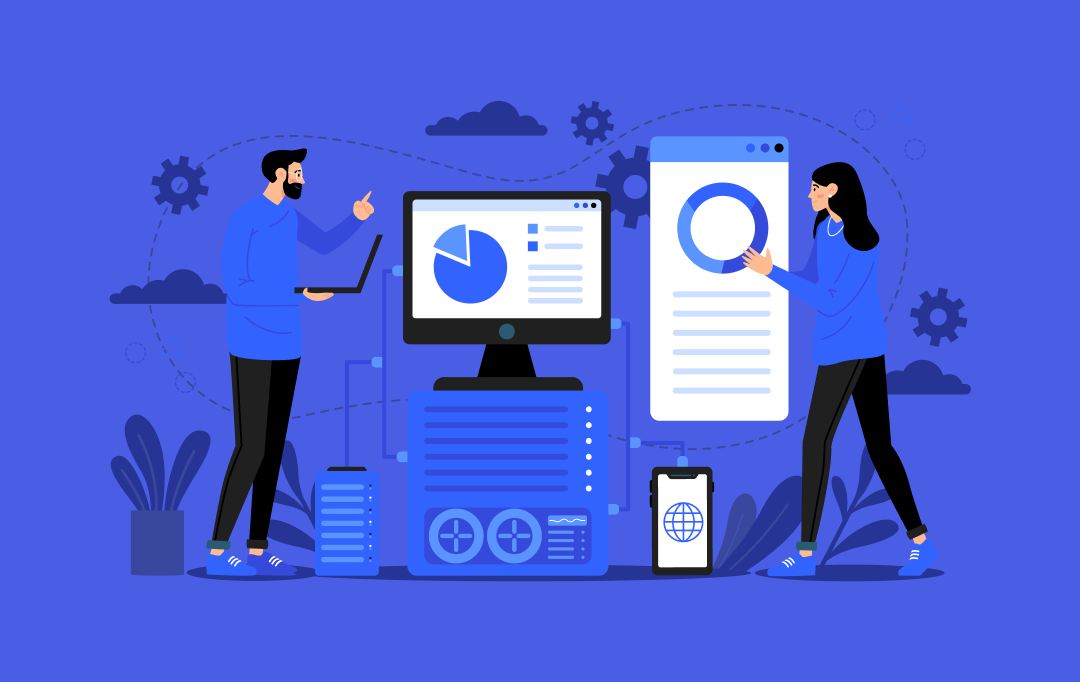
How Much Does It Cost to Build a White-Label Enterprise Procurement Software?
Key takeaways: The development of white-label enterprise procurement software typically costs between $50,000 and $500,000, depending on complexity and features. Key features include vendor management, budget tracking, purchase approvals, and invoice automation. Flexible monetization models - from modular licensing to integration fees- can future-proof revenue streams. Building a custom white-label solution gives you long-term control…

A Clear Breakdown of Custom Software Development Costs for Businesses in Canada
Key takeaways: Custom software in Canada typically ranges from CAD 55,00 to 550,000 ($40,000 to $400,000), depending on scope, integrations, and compliance. Costs rise in regulated sectors due to PHIPA, PCI DSS, AML rules, and strict Canadian data residency requirements. Planning, modular architecture, and cloud native services help control the software development cost in Canada…
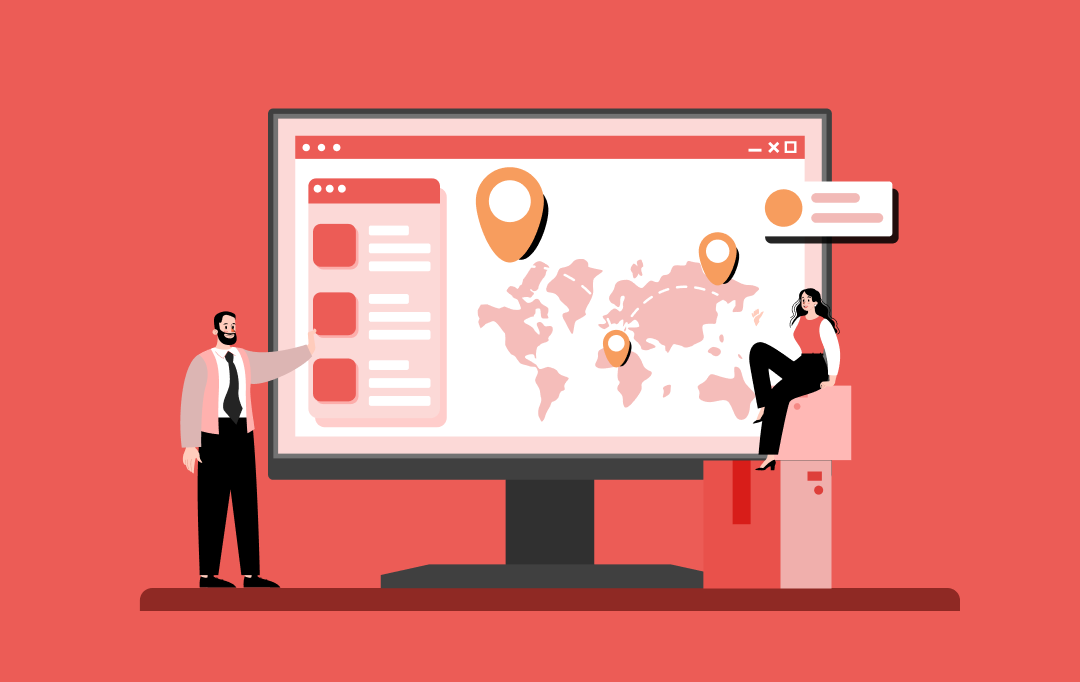
The Real Cost of Building Professional Delivery Management Software
Key takeaways: Custom delivery management software has complete flexibility, scale, and integration, which conforms to the distinctive requirements of business. Fluid connection to ERP, CRM, and payment systems also introduces a large amount of complexity and additional cost, but is the key to efficiency. It is important to design scalable systems to grow in the…

